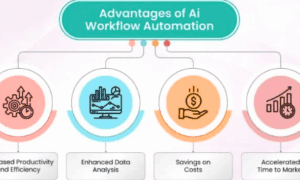For decades, the idea of “aging in place” has been a goal for many seniors and their families. The comfort of staying in a familiar environment matters deeply, but providing care at home has often been seen as challenging. Today, that narrative is changing. Technology is transforming what home care looks like, making it more effective, more personalized, and more sustainable.
From wearable devices to AI-driven tools, the digital layer being added to traditional home care is revolutionizing the way seniors receive support. The result is a model of care that combines the best of human compassion with the power of innovation.
The Role of Remote Monitoring
One of the most significant shifts in home care has been the rise of remote health monitoring. Devices that track vital signs such as heart rate, blood pressure, and oxygen levels can now send data directly to healthcare providers. According to the National Institute on Aging, remote monitoring reduces hospital visits and helps detect potential health issues early.
For seniors, this means greater independence. For families, it provides peace of mind knowing that changes in health status can be identified before they become emergencies. For caregivers, it ensures more accurate, data-informed decisions about daily care.
AI and Predictive Care
Artificial intelligence is reshaping how home care is delivered. AI systems can analyze health data and identify trends that may indicate upcoming health challenges. For example, subtle changes in walking speed or sleep patterns could signal risks of falls or cognitive decline.
These insights allow caregivers and healthcare teams to act proactively rather than reactively. Instead of waiting for a crisis, interventions can be made early, helping seniors maintain stability at home for longer. The result is not only better health outcomes but also reduced costs associated with hospital admissions.
Wearables That Make Independence Possible
Wearable technology has become a natural extension of home care. Smartwatches and medical alert devices can track fitness, send reminders for medication, and even call for help in emergencies. The best part is that many of these devices are designed to look like everyday accessories, removing the stigma that used to come with medical alert systems.
This balance of function and dignity is crucial. Seniors want independence, and technology can provide it without stripping away their sense of autonomy.
Communication Technology That Keeps Families Connected
One of the biggest challenges in home care has always been communication. Families want to stay informed, but caregivers also need space to do their work effectively. Digital platforms now bridge this gap. Mobile apps allow real-time updates on care routines, medication adherence, and changes in health. Video calls make it easy for seniors to see their families regularly, even when distance is an obstacle.
This interconnectedness not only builds trust but also strengthens the emotional support system surrounding seniors. Knowing that loved ones are only a video call away adds to the sense of safety and belonging.
Smart Homes That Support Daily Living
Beyond health-specific tools, smart home technology is also transforming the way seniors experience independence. Voice-activated assistants can help with everything from setting reminders to controlling lights. Smart locks and security systems add a layer of safety. Automated thermostats ensure comfort without requiring constant adjustment.
For seniors with mobility challenges, these technologies reduce the burden of daily tasks. For caregivers, they provide reassurance that the home environment itself is supportive and safe.
Balancing Innovation With Human Care
While technology is advancing rapidly, it does not replace the human element of home care. Seniors need more than monitoring and data. They need compassion, companionship, and trust. The most successful models of home care combine innovation with human presence.
That is where organizations like Integracare Home Care stand out. By offering a blend of professional, relationship-based care alongside the integration of modern tools, they show how technology can enhance (not overshadow) the human touch.
Challenges in Tech Adoption
Of course, the transformation is not without challenges. Some seniors feel overwhelmed by new technology. Others may worry about privacy and data security. Training and support are critical to ensure that tools are not just available but also usable.
Families and providers must also recognize that technology should be an enabler, not a replacement. It should make care more efficient, not impersonal. Thoughtful adoption and education are key to avoiding gaps that could leave seniors feeling isolated or confused.
The Bigger Picture: Redefining Aging in Place
The integration of technology into home care represents more than a trend. It is redefining what it means to age in place. Seniors are no longer limited by the old trade-off of comfort versus care. They can now remain in their homes with the confidence that support is both present and proactive.
For families, this shift brings relief and reassurance. For caregivers, it provides better tools and insights to deliver effective support. For seniors, it means dignity, independence, and a higher quality of life.
The Future of Home Care Is Hybrid
Looking ahead, the most successful home care models will be hybrid. Technology will handle the monitoring, reporting, and predictive analysis. Human caregivers will provide the empathy, companionship, and hands-on care that no machine can replicate. Together, they will create a system that is more resilient, more efficient, and more attuned to the real needs of seniors.
The transformation is already underway. And as innovation continues, the future of home care will be defined by both the warmth of human connection and the precision of modern technology.



































